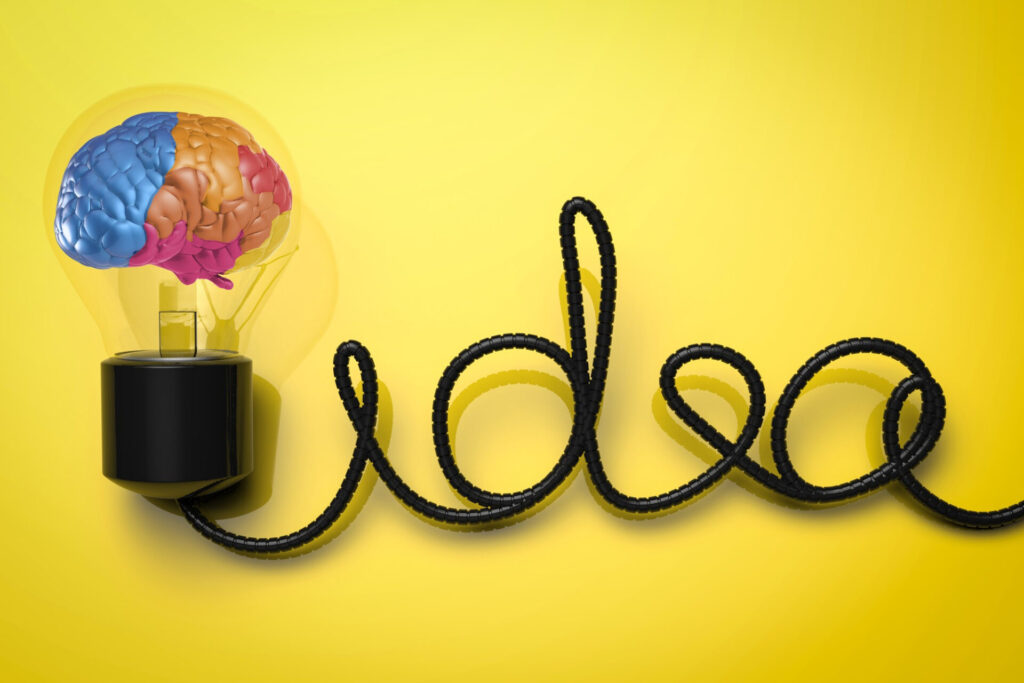Why Divergent Thinking Techniques Matter in a World of Innovation
In today’s fast-paced, ever-evolving world, creativity isn’t just a desirable trait—it’s a necessity. Whether you’re an entrepreneur launching a startup, a student tackling complex subjects, or a professional solving daily challenges, your ability to think creatively sets you apart. This is where divergent thinking techniques come into play.
Unlike traditional, linear approaches to thinking, divergent thinking empowers you to explore many possible solutions instead of settling for just one. It’s about seeing opportunities where others see obstacles, imagining alternatives when others accept limitations, and generating ideas that push boundaries instead of following them.
🚀 The Age of Creative Thinking
Modern problems—from climate change to business disruption—can’t be solved by recycled ideas. That’s why companies are hiring for creativity, schools are redesigning how they teach, and individuals are looking for ways to unlock their inner innovation engine.
Yet creativity isn’t magic. It’s not reserved for “artistic types” or genius minds. It’s a learnable skill, and like any skill, it gets stronger with practice. By using targeted creative thinking strategies, you can train your brain to think outside the box and generate better ideas, faster.
“You can’t use up creativity. The more you use, the more you have.”
Maya Angelou
🧠 Inside the Creative Mind
Scientific studies show that when you’re thinking divergently, your brain lights up in areas related to memory, emotion, and abstract reasoning. You’re not just solving problems—you’re exploring them from angles others haven’t even considered.
This doesn’t mean abandoning logic or structure. In fact, the best creative minds know how to balance divergent and convergent thinking—first generating ideas freely, then refining them purposefully.
🔑 What This Guide Will Help You Unlock
This article isn’t about abstract theory—it’s about actionable tools that help you think better. You’ll learn:
✔️ Proven divergent thinking techniques used by top creatives and innovators
✔️ How to improve creative thinking with simple daily habits
✔️ Practical strategies for thinking outside the box
✔️ Why traditional thinking holds you back—and how to break free
Whether you’re brainstorming, solving problems, building something new, or rethinking something old—these methods will reshape how you think.

Key Principles of Divergent Thinking
Divergent thinking thrives on flexibility, openness, and the willingness to explore multiple perspectives. Understanding its key principles helps unlock creative potential and break free from habitual patterns of thought.
Breaking Free from Conventional Thinking
One of the biggest barriers to creativity is the tendency to rely on familiar solutions. Society often rewards logical, structured thinking, which is essential for problem-solving but can also limit creative exploration. Divergent thinking, on the other hand, challenges us to move beyond convention.
🔹 Challenge Assumptions – Ask “What if?” and “Why not?” instead of accepting things as they are.
🔹 Reframe the Problem – Look at challenges from different angles to uncover hidden opportunities.
🔹 Question the Status Quo – Consider alternative ways of doing things, even if they seem unconventional.
Example: Imagine you’re trying to increase productivity at work. A conventional approach might be to enforce stricter deadlines, but a divergent thinker might explore flexible schedules, creative workspaces, or gamified incentives.
Embracing Ambiguity and Uncertainty
Most people are uncomfortable with ambiguity, preferring clear answers and predictable outcomes. However, great innovators thrive in uncertainty because it opens up limitless possibilities. Divergent thinking requires tolerance for ambiguity, allowing ideas to evolve organically rather than forcing them into a rigid structure.
✔️ Adopt a “Yes, And” Mindset – Instead of dismissing ideas that seem unusual, build upon them.
✔️ Stay Open to Possibilities – Some of the best ideas emerge from unexpected connections.
✔️ Accept Imperfection – Creativity is often messy; ideas don’t need to be fully formed to be valuable.
Example: When designing a new product, rather than insisting on a perfect first draft, a team practicing divergent thinking might explore multiple rough prototypes, experimenting with different concepts before narrowing down the best approach.
Encouraging Unconventional Ideas
Creative breakthroughs happen when people dare to think differently. Many of the world’s most successful entrepreneurs, artists, and scientists achieved greatness by embracing ideas that initially seemed outlandish or impractical.
🔹 Look Beyond the Obvious – The first idea is rarely the most original. Push yourself to go further.
🔹 Combine Unrelated Concepts – Innovation often arises from merging different fields of knowledge.
🔹 Use Playfulness as a Tool – Creativity flourishes when people allow themselves to explore ideas without fear of judgment.
Example: In the 1990s, toy manufacturers faced declining sales. A divergent thinker at LEGO suggested integrating digital experiences with physical play, leading to partnerships with video games and movie franchises—an unconventional move that revitalized the brand.
Key Takeaway:
Divergent thinking is about pushing past habitual patterns, staying open to uncertainty, and fostering unconventional ideas. By embracing these principles, anyone can cultivate a mindset that fuels creativity and innovation.

Practical Strategies to Develop Divergent Thinking
Divergent thinking is a skill that can be nurtured with deliberate practice. By using structured techniques and creative exercises, anyone can expand their ability to generate innovative ideas. Below are some of the most effective strategies.
Mind Mapping: Visualizing Creative Pathways
Mind mapping is a powerful tool that visually organizes thoughts and helps uncover new connections between ideas. It allows individuals to branch out from a central concept and explore multiple possibilities.
✔️ How to Use Mind Mapping:
- Start with a central idea – Write a word or concept in the center of a page.
- Branch out with related concepts – Draw lines extending outward and add words or images that relate to the main idea.
- Expand further – Continue breaking ideas down into subcategories, making unexpected connections.
- Look for patterns – Identify recurring themes or innovative combinations.
Example: If brainstorming a new business idea, a mind map can help explore different markets, potential products, branding strategies, and revenue models—all visually interconnected.
Brainstorming Techniques That Actually Work
Brainstorming is a common creativity tool, but to be truly effective, it requires structure and the right mindset.
🔹 Diverse Perspectives: Involve people from different backgrounds to introduce fresh viewpoints.
🔹 Quantity Over Quality: The goal is to generate as many ideas as possible without filtering or judging them.
🔹 Time Constraints: Set a timer to encourage rapid thinking and prevent over-analysis.
✔️ Brainstorming Methods:
- Rapid Ideation – Set a five-minute timer and list as many ideas as possible.
- Reverse Thinking – Instead of solving a problem, think about how to make it worse. Then, reverse those ideas into solutions.
- Brainwriting – Instead of discussing ideas verbally, participants write them down, reducing bias and encouraging independent thought.
Example: A marketing team struggling to attract new customers might use reverse thinking: “How can we make our campaign completely ineffective?” Answers like “make the ads boring” or “ignore customer needs” can then be flipped into positive solutions.
The SCAMPER Method for Idea Generation
SCAMPER is an acronym for a structured brainstorming technique that helps individuals modify existing ideas to create something new. It stands for:
- Substitute – What elements can be replaced?
- Combine – Can two ideas be merged?
- Adapt – How can this be adjusted for a new purpose?
- Modify – Can size, color, shape, or functionality be changed?
- Put to another use – Is there an alternative way to use this?
- Eliminate – What parts can be removed?
- Reverse – What happens if we do the opposite?
Example: If redesigning a traditional backpack, applying SCAMPER might lead to a foldable version (Modify), a solar-powered charger (Combine), or a transparent design for security purposes (Reverse).
Role-Playing and Perspective Shifting
Looking at problems from different perspectives encourages innovative solutions. Role-playing exercises help individuals see challenges from a fresh viewpoint.
✔️ How to Practice Perspective Shifting:
- The Opposite Approach: Consider what someone with the opposite mindset would do.
- Character-Based Thinking: Imagine how an artist, scientist, or entrepreneur would approach the issue.
- Future Thinking: Ask how the problem would be solved in 10, 20, or 50 years.
Example: A teacher struggling to engage students in math might role-play as a video game designer and explore how gamification could make learning more interactive and fun.
Key Takeaway:
Divergent thinking can be cultivated through structured strategies like mind mapping, brainstorming, SCAMPER, and perspective shifting. These methods help generate creative solutions, challenge assumptions, and lead to breakthrough ideas.

Overcoming Mental Blocks and Creativity Killers
Even the most creative minds encounter obstacles that hinder divergent thinking. These mental blocks stem from self-doubt, rigid habits, fear of failure, and external pressures. Learning to recognize and overcome these barriers is essential for unlocking creativity.
The Role of Fear and Self-Doubt in Limiting Creativity
Fear is one of the biggest creativity killers. Fear of judgment, failure, or coming up with “bad” ideas can prevent people from freely exploring possibilities.
🔹 Why Fear Restricts Divergent Thinking:
✔️ It triggers the brain’s survival mechanism, leading to risk-avoidant behavior.
✔️ It promotes perfectionism, making people hesitant to share incomplete or “imperfect” ideas.
✔️ It encourages self-censorship, leading to fewer creative breakthroughs.
✔️ How to Overcome Fear and Self-Doubt:
- Adopt a Growth Mindset – View failures as learning experiences rather than roadblocks.
- Use the “Bad Ideas First” Technique – Intentionally generate unrealistic or even silly ideas first to remove pressure and stimulate creative flow.
- Shift the Focus to Exploration – Approach brainstorming with curiosity rather than the need for immediate results.
Example: Thomas Edison famously said, “I have not failed. I’ve just found 10,000 ways that won’t work.” His ability to embrace failure allowed him to refine and perfect his inventions.
How Routine and Habit Suppress Divergent Thinking
While habits and routines create stability, they can also trap individuals in rigid thought patterns that stifle creativity. Divergent thinking requires mental flexibility, which means occasionally breaking from routine.
🔹 How Routines Can Block Creativity:
✔️ They reinforce automatic thinking, limiting exposure to new perspectives.
✔️ They discourage experimentation, leading to predictable solutions.
✔️ They create a false sense of efficiency at the cost of innovation.
✔️ How to Break Out of Creative Ruts:
- Change Your Environment – Work in different locations or rearrange your workspace to stimulate new ideas.
- Expose Yourself to New Experiences – Read books outside your usual interests, travel, or engage in unfamiliar activities.
- Challenge Assumptions – Question why things are done a certain way and explore alternative methods.
Example: Steve Jobs took calligraphy classes in college, which later influenced Apple’s elegant typography and design principles. Exposure to unrelated disciplines often fuels innovation.
Strategies for Breaking Through Mental Barriers
When creative blocks arise, it’s important to have strategies to reset the mind and re-engage in divergent thinking.
✔️ Effective Techniques to Overcome Mental Blocks:
- Take Breaks – Stepping away from a problem allows the subconscious mind to process information in the background.
- Use Random Stimuli – Introduce random words, images, or objects into your thought process to spark new connections.
- Collaborate with Others – External perspectives challenge assumptions and introduce fresh ideas.
- Engage in Physical Movement – Exercise, walking, or even simple stretching can boost brain function and creativity.
- Practice Freewriting – Set a timer and write whatever comes to mind without filtering or editing.
Example: Albert Einstein often played the violin when stuck on a complex problem. This seemingly unrelated activity helped him generate new insights by shifting mental gears.
Key Takeaway:
Mental blocks like fear, routine, and rigid thinking hinder divergent thinking. Overcoming these barriers requires intentional shifts in mindset, exposure to new experiences, and creative problem-solving techniques.
References and Inspirational Resources
- Runco, Mark A. Creativity: Theories and Themes—Research, Development, and Practice. Elsevier.
- Guilford, J. P. The Nature of Human Intelligence. McGraw-Hill.
- Michalko, Michael. Thinkertoys: A Handbook of Creative-Thinking Techniques. Ten Speed Press.
- Sawyer, R. Keith. Explaining Creativity: The Science of Human Innovation. Oxford University Press.
- IDEO – Resources on design thinking and creative problem solving.
- Harvard Business Review – Articles on innovation, creativity in leadership, and problem-solving strategies.
- Psychology Today – Articles exploring divergent thinking, creative habits, and mental flexibility.















